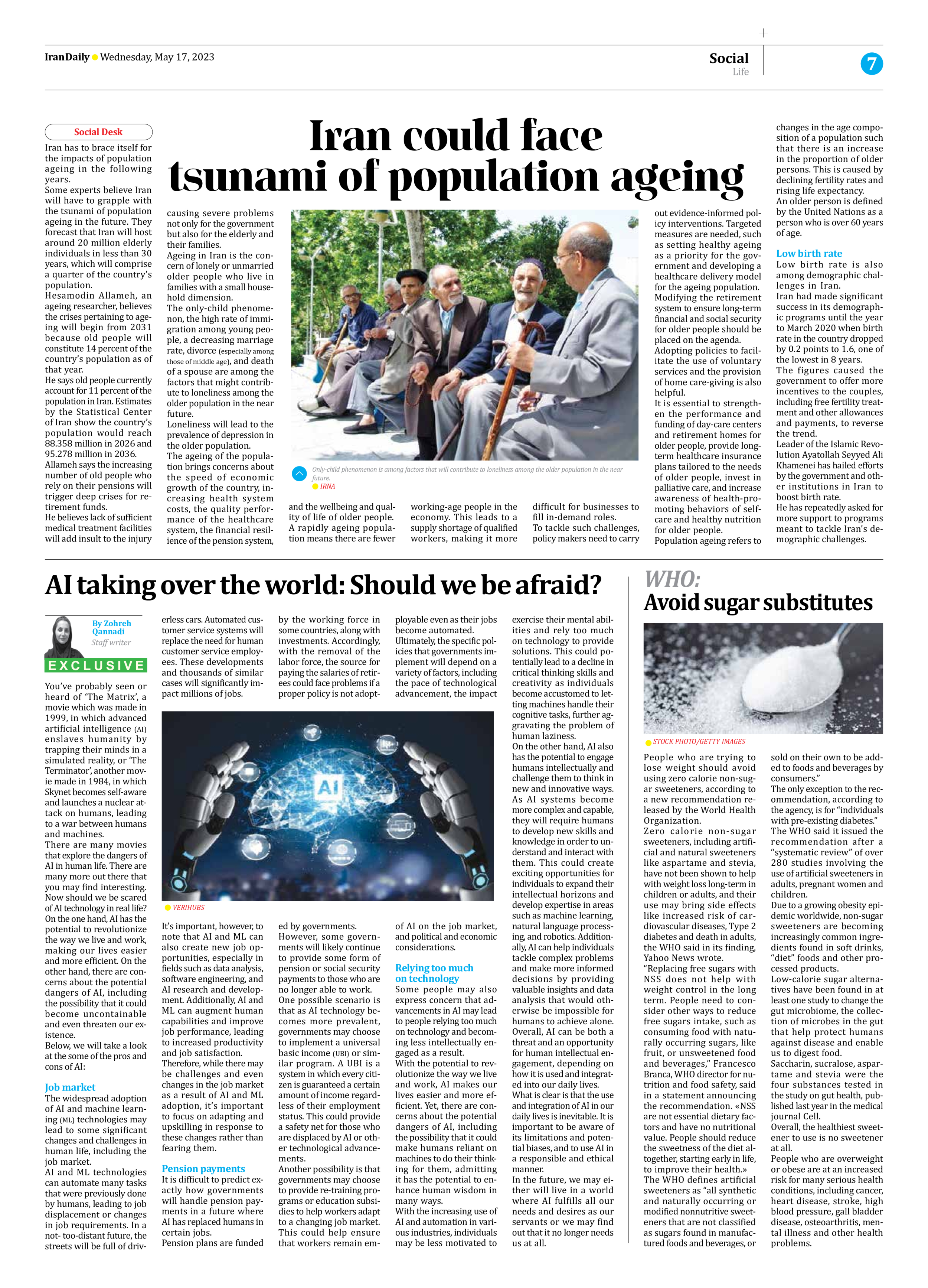
Iran could face tsunami of population ageing
Iran has to brace itself for the impacts of population ageing in the following years.
Some experts believe Iran will have to grapple with the tsunami of population ageing in the future. They forecast that Iran will host around 20 million elderly individuals in less than 30 years, which will comprise a quarter of the country’s population.
Hesamodin Allameh, an ageing researcher, believes the crises pertaining to ageing will begin from 2031 because old people will constitute 14 percent of the country’s population as of that year.
He says old people currently account for 11 percent of the population in Iran. Estimates by the Statistical Center of Iran show the country’s population would reach 88.358 million in 2026 and 95.278 million in 2036.
Allameh says the increasing number of old people who rely on their pensions will trigger deep crises for retirement funds.
He believes lack of sufficient medical treatment facilities will add insult to the injury causing severe problems not only for the government but also for the elderly and their families.
Ageing in Iran is the concern of lonely or unmarried older people who live in families with a small household dimension.
The only-child phenomenon, the high rate of immigration among young people, a decreasing marriage rate, divorce (especially among those of middle age), and death of a spouse are among the factors that might contribute to loneliness among the older population in the near future.
Loneliness will lead to the prevalence of depression in the older population.
The ageing of the population brings concerns about the speed of economic growth of the country, increasing health system costs, the quality performance of the healthcare system, the financial resilience of the pension system, and the wellbeing and quality of life of older people.
A rapidly ageing population means there are fewer working-age people in the economy. This leads to a supply shortage of qualified workers, making it more difficult for businesses to fill in-demand roles.
To tackle such challenges, policy makers need to carry out evidence-informed policy interventions. Targeted measures are needed, such as setting healthy ageing as a priority for the government and developing a healthcare delivery model for the ageing population.
Modifying the retirement system to ensure long-term financial and social security for older people should be placed on the agenda.
Adopting policies to facilitate the use of voluntary services and the provision of home care-giving is also helpful.
It is essential to strengthen the performance and funding of day-care centers and retirement homes for older people, provide long-term healthcare insurance plans tailored to the needs of older people, invest in palliative care, and increase awareness of health-promoting behaviors of self-care and healthy nutrition for older people.
Population ageing refers to changes in the age composition of a population such that there is an increase in the proportion of older persons. This is caused by declining fertility rates and rising life expectancy.
An older person is defined by the United Nations as a person who is over 60 years of age.
Low birth rate
Low birth rate is also among demographic challenges in Iran.
Iran had made significant success in its demographic programs until the year to March 2020 when birth rate in the country dropped by 0.2 points to 1.6, one of the lowest in 8 years.
The figures caused the government to offer more incentives to the couples, including free fertility treatment and other allowances and payments, to reverse the trend.
Leader of the Islamic Revolution Ayatollah Seyyed Ali Khamenei has hailed efforts by the government and other institutions in Iran to boost birth rate.
He has repeatedly asked for more support to programs meant to tackle Iran’s demographic challenges.







